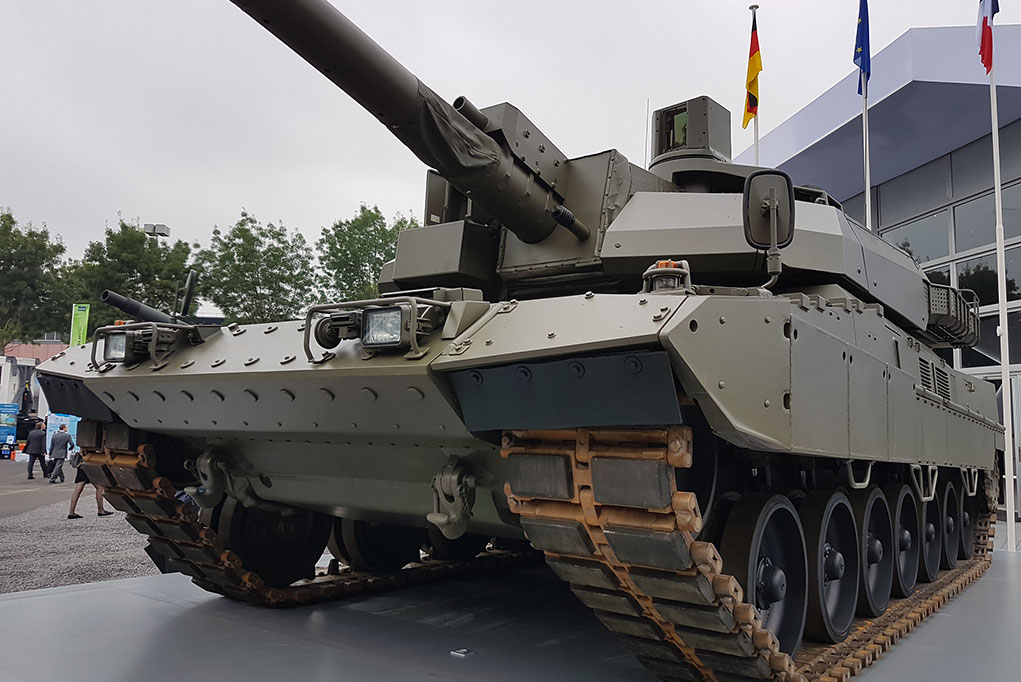
Germany agreed to join the French lead European Intervention Initiative (IEI). The project brings together a dozen European countries, capable militarily and politically willing to face evolving security challenges, and better able to protect its citizens. France, UK, Netherlands, and Germany were among the first to endorse the project. The Letter Of Intent signed yesterday is a significant step forward in the defense cooperation between the two countries and in Europe. This close cooperation was the key motivation for the foundation of KNDS in 2015, where Nexter and KMW cooperate as national system houses for land systems.
The two companies embarked on the joint development of a future main battle tank and artillery systems for the armies of the two countries. The German tank manufacturer KMW and French defense conglomerate Nexter which already merged under the KNDS brand in 2015 welcomed the announcement. In the past year, the two companies practiced such cooperation building a European Main Battle Tank (EMBT) based on a KMW Leopard 2A7 chassis and a Leclerc turret with its integral auto-loader, provided by Nexter. The EMBT uses the standard systems delivered with the current Leopard 2 and Leclerc models, to provide the same firepower, performance and protection levels, at a gross vehicle weight of 62 tons. According to program officials, the vehicle has about six tons of growth potential, for future evolution. The joint project was displayed at the recent Eurosatory 2018 exhibition.
The future Franco-German tank has not been defined yet but is already known as the ‘Main Ground Combat System’ (MGCS). Another combat system is the future self-propelled artillery unit – known as Common Indirect Fire System (CIFS). MGCS will develop a new generation of Main Battle Tanks, providing their users enhanced, innovative, and best-in-class systems with the most advanced technologies. Germany is designated the lead country in the MGCS, the program is set to begin a joint demonstration phase in mid-2019, leading to a detailed operational need statement by the two countries, by 2024.
Following a French initiative launched by President Emmanuel Macron in 2017, IEI foresees the formation of a joint, European intervention force. The new formation will operate in parallel to the current European multilateral organizations (the North Atlantic Treaty Organization NATO, and the European Union – EU), that will provide the continent an independent military intervention capability, which will be based on common doctrine and funding supported by the participating countries. The formation of the new force is planned for years 2019-2024 to establish a “shared strategic culture”, according to Emmanuel Macron.
Another collaborative program signed by the two defense ministries is the Future Air Combat System (SCAF). France will act as the leading nation in that program, that will define a common successor for the Rafale and the Eurofighter fighter jets, to be introduced in 2040.
The future multi-purpose combat aircraft will exploit network-based combat capabilities and artificial intelligence and will employ manned and unmanned capabilities. Dassault, the manufacturer of the Rafale, and Eurofighter, of the Airbus consortium, are both participants in the program, expected to begin as a concept study later in 2018.
IEI is expected to strengthen the links between the armed forces of the member countries, with the aim of developing a common strategic culture and European strategic autonomy. A separate NATO and EU member, the IEI will contribute to the efforts undertaken within these two institutions, in particular, those of the Permanent Structured Cooperation (SPC), with which the IEI will maintain close links.
The defense ministers of the representative countries will sign a Letter of Intent in the next week, to formally launch the initiative. This commitment will be translated in the coming weeks and months by a ministerial orientation meeting, followed by the first military strategic meeting that will bring together the staffs of the participating countries, as well as the launch of the first operational activities of the IEI.



















